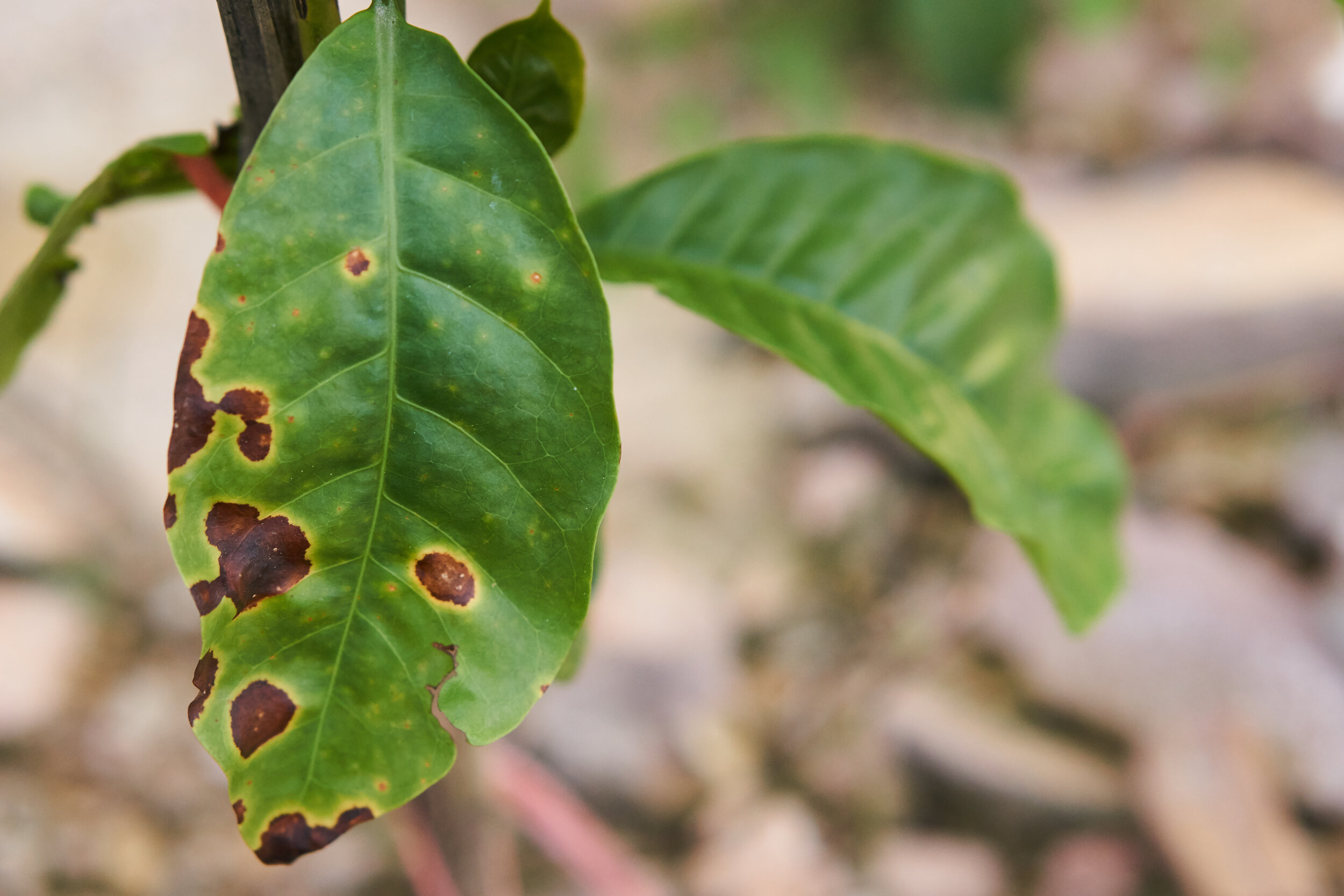The Climate Emergency's Threat to Coffee
Alika Magas | April 21, 2021
It was not long ago that the scientific community came together and accurately renamed climate change. The term “climate emergency” emerged in 2019 and was named Oxford’s word of the year. And, with all of the terrifying repercussions we’ve seen—from floods, to hurricanes, to polar vortexes freezing over Texas, to sun-blocking wildfires—the word could not be more accurate. A lot is at stake.
You’ve no doubt heard that coffee is one of the plants first in line to be a victim of the climate emergency. Yet, just hearing its victim status is far different from knowing the skyscraper of odds stacked against it. Want the coffee crisis in a nutshell? Scientists anticipate that over 50% of coffee species—both domesticated and wild—are in serious danger of extinction. In Latin America, the world’s largest coffee producer, the area suitable for growing coffee will be reduced by up to 50% by 2050. And, looking to Africa, only 45% of the land will suit coffee’s growing conditions by 2080. What’s worse: scientists acknowledge these predictions are made using optimistic models.
Now, all those numbers can feel far off. After all, the key decades, 2050 and 2080, seem like big numbers. So, let’s put it this way. The important implications of the climate emergency’s effect on coffee could be visible by 2042. Meaning, if you had a child this year, by the time they enter their sophomore year of college, coffee will be an expensive and increasingly rare commodity. Yes, you read that correctly.
By their sophomore year of college.
An example of leaf rust on a coffee plant. The fungus thrives in heat, becoming more prevalent as the earth’s average temperature increases.
So, here’s what you need to know about all the ways the Climate Emergency targets coffee directly.
There are two main types of coffee in the industry: first, there’s Robusta. Robusta is known as the more resilient, or “robust”, coffee species. But, to account for this, its flavor tends to be bolder and less nuanced. It’s the coffee often used for instant packets, blends, or mass-production such as Folger’s. And then, there is Arabica coffee which is known to have more flavor complexities and makes up roughly 60-80% of all coffee output.
Arabica, having evolved in the cool and shady environment of Ethiopia, relies on gentle temperatures for its complex flavors. The ideal temperature range for growing these beans spans between 59 and 75 degrees Fahrenheit because the flavor essentially needs to “slow-cook” in order to gain its signature complexity. As the world’s average temperature continues to rise, the quality of the coffee will drop dramatically.
What’s more, Arabica needs a regular annual rainfall of 59-79 inches. The difficulties of achieving this level of precipitation only worsens as droughts become more and more prevalent with each passing year. Not to mention that as temperatures continue to rise, the conditions for coffee-threatening diseases and pests—such as leaf rust and the coffee borer beetle—will only become more ideal. The physical weather conditions will not only be hostile, but the plants who find the strength to grow will fall victim to increasingly ravenous bugs and fungi.
Of course, there is an immediate fix. As the climate shifts at coffee’s typical growing elevation so will the climate at higher elevations. This will, inevitably, allow coffee farms to succeed at higher-than-normal altitudes. But this comes with one gigantic flaw. Only 20% of the world’s coffee farms are economically capable of relocating their operations. The remaining farms are all small-holder operations who have no way to afford moving to higher land. To top this all off, here is one final, disheartening fact. In sixty years, the world’s topsoil will be depleted. The nutrients plants need to grow will no longer be naturally available to them. Crop production as a whole, not just coffee, will hit a deadly standstill.
This is a lot of doom-and-gloom to take in. It’s far more than you bargained for when you woke up this morning, or clicked on the link to this article, for that matter. So don’t be mistaken. There are achievable ways to combat these threats.
One of the most hopeful solutions comes in two big words. They are “multistrata agroforestry”. Don’t worry, here’s the English translation. What it means is that farms begin to change their growing conditions so that there are multiple layers to their land. The range of layers can vary from place to place, but the two requirements are a ground floor layer and a canopy layer. This is the exact principle behind shade grown coffee and the Bird Friendly certification mentioned on Ampersand’s website. The solution comes with a variety of climate perks.
While the only crop being grown here is coffee, this image depicts the basis for Multistrata Agroforestry.


